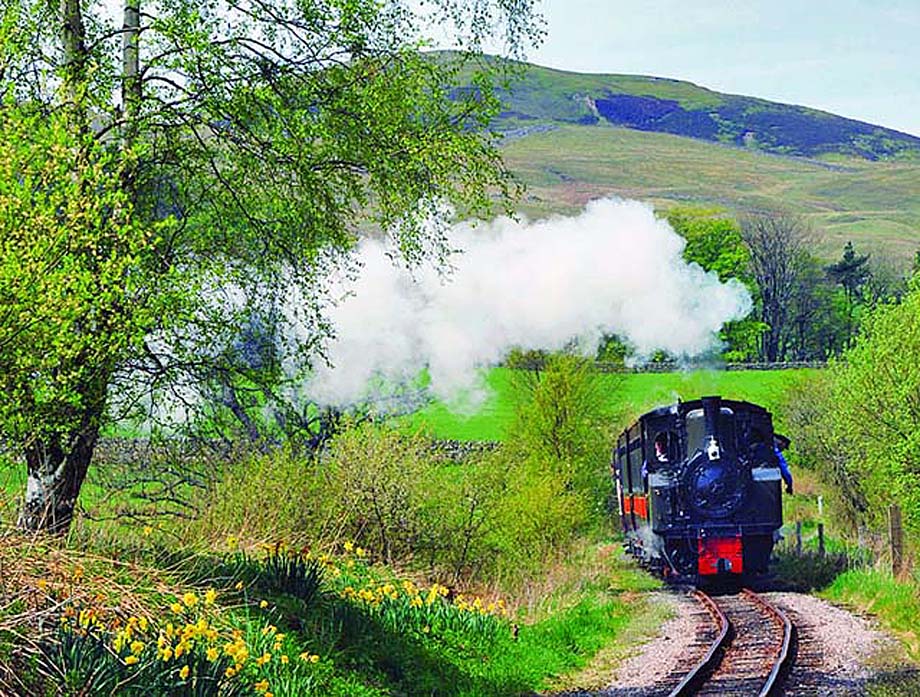

Alston-based South Tynedale Railway (STR) this week announced a £5.5 million development project that will be funded in large part by £4.2 million awarded by the Heritage Lottery Fund.
The investment by STR, the biggest it has made, will protect and enhance railway and industrial heritage in the remote upper South Tyne Valley.
It will also build long-term environmental sustainability into the railway's business plan, open up employment opportunities, develop a stronger education program for visitors of all ages, and expand skills training in the charity's volunteer and paid workforce.
Brian Craven, STR deputy chairman, said, "Some time ago we realized, that if we are to continue to build on the success of 30 years of development, we had to do new and different things. We have to attract new visitors, and more of them to the lovely South Tyne Valley and our railway. When we reviewed how we work we recognized that we were spending far too much on resources like power, fuel, and other essential utilities and we must do something about that. Alston is a remote town and the STR is important to its economy. We are keen to work with others to do still more to extend quality employment opportunities to local folk. This project will fulfil all of these aims and more."
The project includes several large capital developments, including the building of a mile and a quarter of railway from the temporary terminus at Lintley to reach Slaggyford, where the station site will be transformed through the repair of wooden buildings, the reconstruction of a replica North Eastern Railway signalbox, and the reinstallation of level crossing gates.
The village is expected to benefit, too, in that new fibre optic cabling essential for the railway's signalling needs could bring fast broadband through joint work with locally-based Cybermoor.
In Alston, the grant contributes towards long-term repairs to the 160-year-old wall that has kept the rivers Nent and Tyne away from the railway.
It was storm-damaged a little over a year ago and temporary repairs will now be made permanent.
Alston station will get a new roof, spanning the platform and tracks, and a second platform for the first time in its history.
Along with all of STR's other buildings, except the Grade II listed Station House, the new roof will be fitted with solar panels to cut fuel bills and provide power to heat newly insulated workshops.
Two almost new battery electric locomotives have been obtained from Transport for London, and they will be re-gauged to fit STR's 2 foot wide track.
Powerful enough to pull passenger coaches, they will be used on the building work, and their batteries will be charged from the railway's own solar power supply.
A historic steam engine, built by Hunslet of Leeds in 1937, and housed in Alston since the 1990s, will be sent away for overhaul.
When it returns it will be equipped to burn waste wood briquettes and will be a rare example of a sustainable energy steam engine.
It will join another Leeds engine, "Barber", which is returning to Alston in 2014.
Together they will be the first British-built steam locomotives on the line and will be used alongside British diesel and electric engines.
The consultants for the successful lottery fund bid were Blackett-Ord Conservation Architecture and Engineering, of Appleby.
A project team, including a railway manager is included, and recruitment will start soon.
A new cafe will allow expansion of the catering business and offer local employment year round.
Alston resident Richard Graham, STR's chairman, said, "This is a huge opportunity to build the economy and wellbeing of the South Tyne Valley. We are really pleased that the Heritage Lottery Fund has shown such faith in our small but flourishing organization and I am looking forward to leading our enthusiastic team as we get to work on the project."
Author unknown.
(likely no image with original article)
(usually because it's been seen before)
(the image is altered or fake)
provisions in Section 29 of the
Canadian Copyright Modernization Act.

